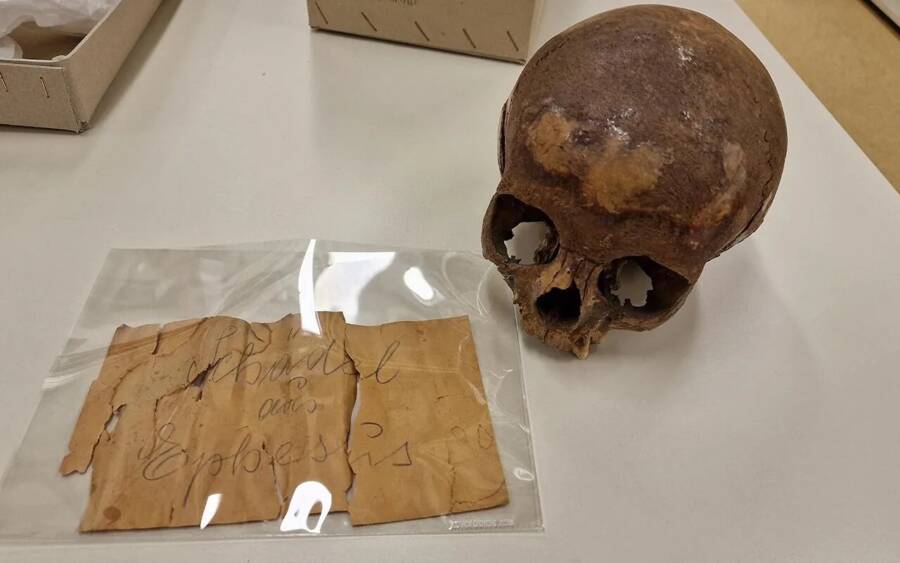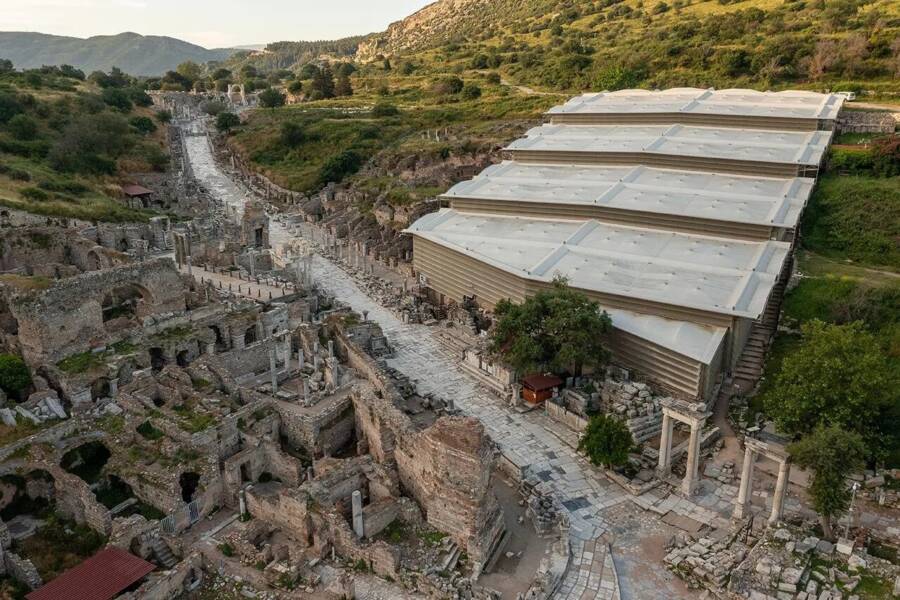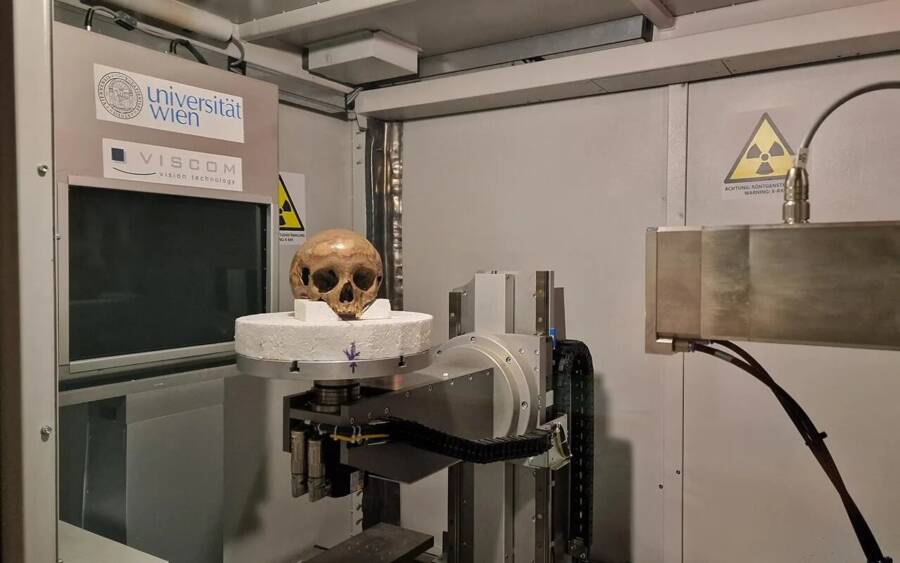Scientists just determined that the skull found in an elaborate tomb in Ephesus in 1929 didn't actually belong to Cleopatra's half-sister Arsinoë IV but rather to an 11- to 14-year-old boy with a possible developmental disorder.

Gerhard Weber/University of ViennaThis skull, which was found in Ephesus in 1929, was long believed to be that of Cleopatra’s half-sister Arsinoë IV.
For nearly a century, scientists have believed that a skull discovered in the ancient Turkish city of Ephesus belonged to Cleopatra’s half-sister Arsinoë IV. Unearthed in 1929 at a magnificent mausoleum known as the “Octagon,” the skull was long thought to be that of the young royal who was executed in Ephesus in 41 B.C.E., 11 years before Cleopatra herself died by suicide.
However, a new analysis of the remains just revealed a surprising twist: The skull actually belonged to an 11- to 14-year-old boy. Now, scientists have even more questions. Who was the young boy? Why was he buried in such an elaborate tomb? And where is Arsinoë?
The Discovery Of The Skull In Ephesus

Austrian Academy of Sciences/Austrian Archaeological InstituteThe Octagon in Ephesus, where the skull was found.
In 1929, Austrian archaeologist Josef Keil came across a skull in a water-logged marble sarcophagus in the “Octagon,” which was once an elaborate mausoleum in Ephesus, Türkiye.
The skull was found by itself with no grave goods or inscriptions to suggest who its owner may have been. However, historical records led to speculation that the skull belonged to Arsinoë IV, Cleopatra’s half-sister.
In 41 B.C.E., 22-year-old Arsinoë was executed in Ephesus on the orders of Mark Antony. Several years earlier, she’d battled against Cleopatra and Julius Caesar during the siege of Alexandria, and she’d been banished to the Turkish city until her death.
Further excavations of the mausoleum in 1982 uncovered more evidence pointing to Arsinoë IV, including the discovery of the rest of the skeleton. Scientists knew the person buried in the sarcophagus must have been important, and the Octagon had architectural similarities to structures in Alexandria, so they assumed that the skull and additional remains must be those of Arsinoë.
Recently, however, a team of researchers from the University of Vienna and the Austrian Academy of Sciences re-examined the skeleton using modern technology — and were left with more questions than answers.
The Young Boy Behind The Ephesus Skull

Gerhard Weber/University of ViennaResearchers analyzed the skull using radiocarbon dating and micro-CT scans.
In a recent study published in Scientific Reports, scientists explained how they analyzed the skull from Ephesus using state-of-the-art technology.
First, the researchers charted the dimensions and characteristics of the skull. Strangely, they discovered that the maxilla, or jawbone, was severely underdeveloped, and the teeth had atypical wear patterns. What’s more, the skull exhibited premature fusion of cranial sutures, which don’t typically close until a person is over 65. This made the cranium misshapen and asymmetrical. These abnormalities may have been caused by a vitamin D deficiency or a genetic disorder.
Radiocarbon dating did reveal that the skull’s owner had died between 205 B.C.E. and 36 B.C.E., the same time as Arsinoë. Then, DNA analysis revealed something very unexpected: a Y chromosome.
“But then came the big surprise,” Gerhard Weber, the lead author of the study and a professor of evolutionary anthropology at the University of Vienna, said in a statement from the university. “In repeated tests, the skull and femur both clearly showed the presence of a Y chromosome — in other words, a male.”
Subsequent testing found the skull’s owner was between 11 and 14 years old when he died, completely ruling out the possibility of the remains belonging to Arsinoë IV.
So, who did the skull belong to? Researchers are still unsure, and the fact that he was buried in such an important tomb raises additional questions about his identity. He may have been a member of a wealthy or high-status family, but this, too, is unknown. However, there is one thing that is clear to researchers:
“What we can now say with certainty,” stated Weber, “is that the person buried in the Octagon was not Arsinoë IV, and the search for her remains should continue.”
After reading about the skull that was long believed to belong to Cleopatra’s sister, go inside the enduring mystery of what Cleopatra actually looked like. Then, read about Caesarion, Cleopatra and Julius Caesar’s love child. Finally, go inside the search for Cleopatra’s tomb.





